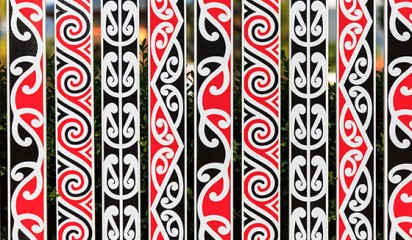It's Māori Language Week this week, and this week more than ever, we see Māori language celebrated and embraced at various events around the country. #Māorilanguageweek and #tewikiotereomāori have taken their rightful place at number 1 on Facebook and Twitter. We also acknowledge and celebrate our te reo Māori champions past and present. It is wonderful to see, and I have to admit that I am excited for te reo Māori and its future in Aotearoa (New Zealand).
The downside that comes with this popularity is the increased risk of misuse and misappropriation. We have seen many examples of that here in New Zealand (Tutanekai and Hinemoa as trade marks for beer) and overseas (Māori on cigarettes and Māori King on beer).
Earlier this week, we discussed how our intellectual property system could be used to support our theme for Māori language week, ‘Kia ora te reo Māori’ or ‘Let’s give life and vitality to the Māori language’.
Today we examine the offensiveness provision in our Trade Marks Act, whether offensiveness goes far enough to support this initiative, and whether more work is needed.
History of the offensiveness provision
In 1991, the government initiated a review of the Trade Marks Act 1953 and suggested some changes to the Act. Māori raised a number of concerns about the proposed changes, and in particular, were of the view the amendments did not adequately protect Māori culture and intellectual property.
The government established the Māori Trade Marks Focus Group, who produced a paper called ‘Māori and Trade Marks: A Discussion Paper’.
The Paper made a number of recommendations on how the government could recognise te reo Māori and mātauranga Māori in the Trade Marks Act.
Two of those recommendations were adopted by Cabinet, and the new Trade Marks Act was passed in 2002. The new Trade Marks Act introduced:
- a discretion that allowed the Commissioner of Trade Marks to object to registration of a trade mark if a trade mark is considered offensive to a significant section of the community, including Māori, section 17(2)
- a Māori Trade Marks Advisory Committee who advises the Commissioner on whether a mark incorporating Māori words or imagery is considered offensive to Māori, section 277.
Māori Trade Marks Advisory Committee and offensiveness
The current Committee members are well-respected members of the Māori community, each having their specific interest in intellectual property and the conflict with mātauranga Māori (Māori knowledge).
The Committee has two roles.
The first role is to advise the Commissioner of Trade Marks on whether trade marks that incorporate Māori text and imagery are considered offensive. The Committee's recommendations are not binding on the Commissioner, and the Committee does not have any adjudication functions.
The current process requires the Commissioner to identify trade marks that feature Māori words or imagery and refer those marks to the Committee for review. The Committee will then provide their recommendations to the Commissioner.
The second role is the Committee can develop guidelines with the Commissioner on marks incorporating Māori text or imagery.
To date, the Committee has introduced three practice guidelines. Where marks that include the word KIWI, geographical names, or pitau (koru) may not automatically be sent to the Committee to review because these marks are not considered offensive.
Has the Committee been effective in dealing with offensiveness?
Recently, the Intellectual Property Office of New Zealand (IPONZ) released a list of marks that had been refused because they were considered by the Committee to be offensive to Māori.
This list confirms the Committee has been effective in refusing those purely offensive marks, including use of iwi names, atua (god) names, and tapū (sacred) words in relation to alcohol and cigarettes. Examples of some of the marks that have been refused include KORO (grandfather) for wine, ARIKI (supreme being, god) for wine, ORA (health, well-being) for cigarettes, KOHIWI (skeleton, corpse) for alcoholic beverages, FIT WHAKA for clothing, and several others.
This is the primary role of the Committee and, yes, the Committee has been effective in that role.
But the Committee was also meant to be part of some wider amendments to assist in the protection of Māori cultural and intellectual property. While the Committee has been effective in its primary role, the Committee is only one part of some wider changes that needed to be taken to address Māori concerns raised in the initial discussion paper.
The fact those wider changes were not made, means we still see undesirable marks being registered here in Aotearoa. For example, Te Māna for cosmetics, ARIKI for clothing, HEY TIKI for digitally stored photographs, and Tiki for wine.
SLANTS case and disparaging marks
It is important here to consider the recent decision by the US Supreme Court in the SLANTS case. It held that a provision in the US Lanham Act, which prevented the registration of disparaging marks, was unconstitutional because it breached the constitutional right of free speech.
As a result of this decision, the challenge against the trade mark registrations for REDSKINS, on the basis that these marks were disparaging to American Indians, was withdrawn.
It is unlikely that our offensiveness provision would be held to be unconstitutional because it conflicted with the right to free speech in the New Zealand Bill of Rights.
But the SLANTS case highlights that it is difficult to incorporate provisions that prevent registration of disparaging or undesirable trade marks in trade mark legislation. Meaning it could be difficult to introduce stronger protection for Māori cultural and intellectual property under our Trade Marks Act.
Conclusion
Overall the offensiveness provision in New Zealand works well in preventing the registration of offensive trade marks.
However, the provision falls well short of the original aspirations of those involved in the initial review and discussion paper. We need to introduce much stronger protections for Māori culture and intellectual property and consequently, ‘give life to te reo Māori’. Perhaps it is finally time to revisit the WAI 262 decision and implement those recommendations.





